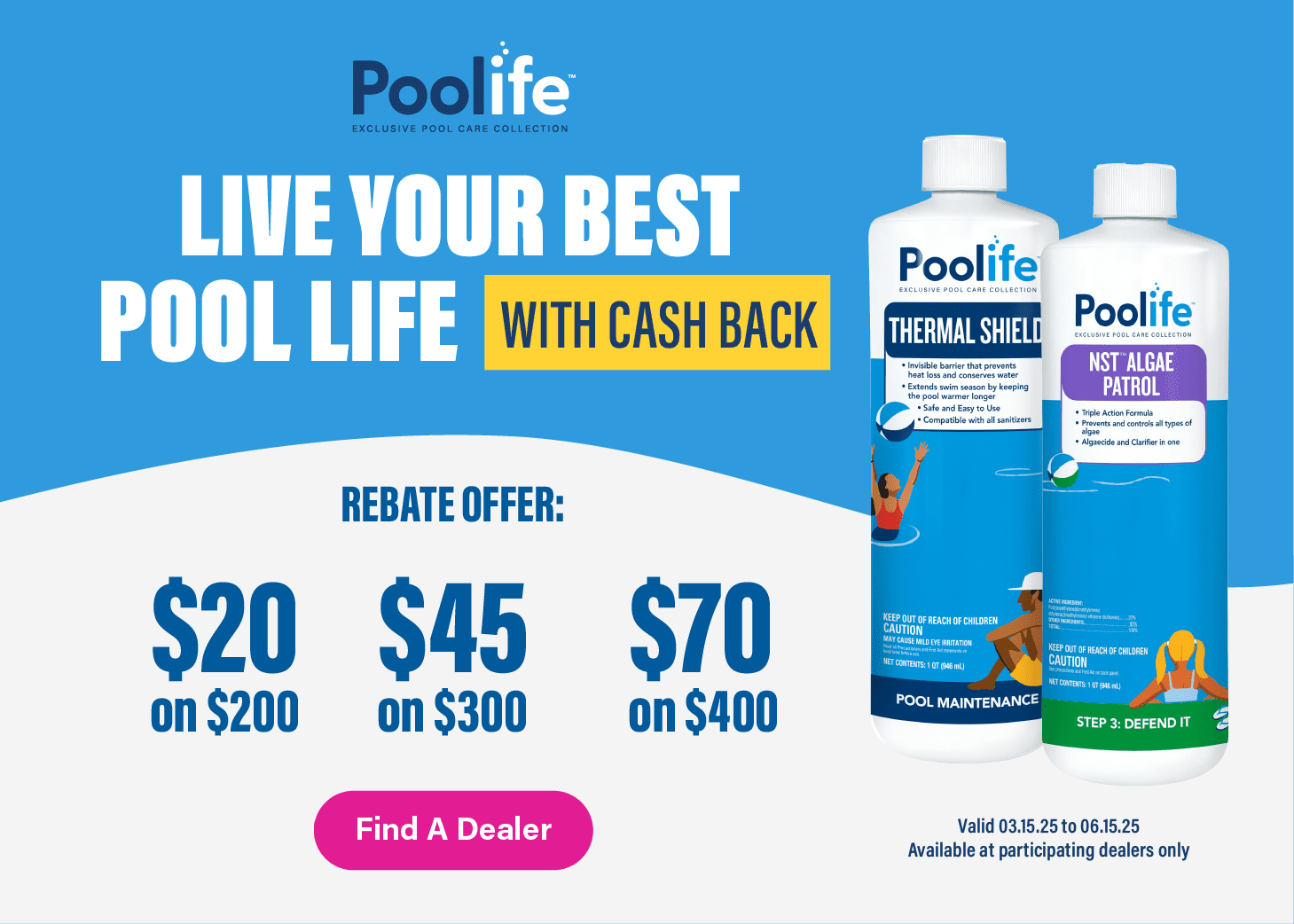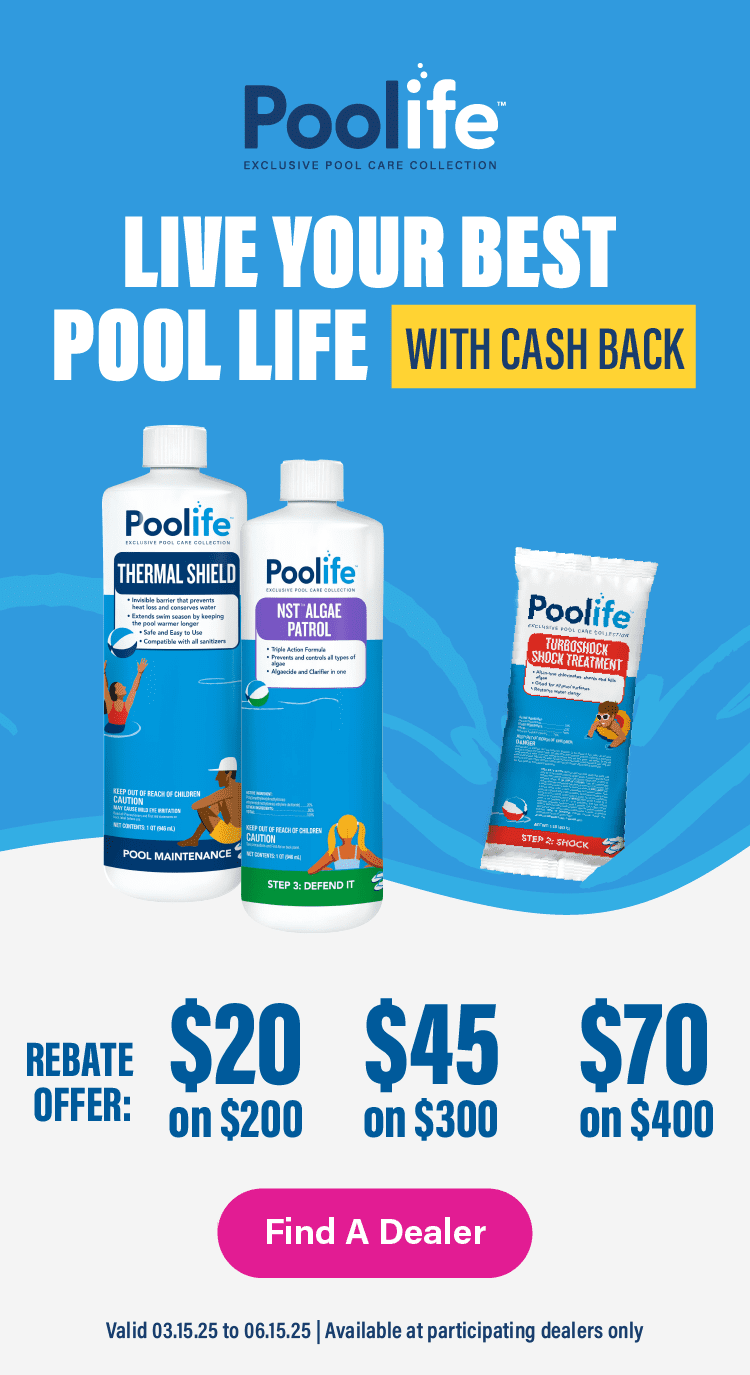Basic Pool Maintenance
Put the fun back in functional pool care!
We’re committed to helping you get as much kick back time with your friends and family as possible, and that means helping you maintain your pool at its peak condition.
Our easy-to-follow maintenance topics below will help you prevent problems before they start and solve them as they occur. Select a topic below to begin!
At Poolife™, we believe that maintaining a crystal-clear pool doesn’t have to be a chore. Our guide to basic pool maintenance empowers you with essential knowledge and top-tier products to ensure your pool maintenance journey is smooth and effortless.
Our comprehensive pool maintenance guide is your key to mastering the art of keeping your pool pristine so you can enjoy your best pool life!
More Than Just Basic Pool Maintenance
With Poolife, pool maintenance goes beyond just water balancing and chlorine level monitoring. We’re here to guide you in creating a haven where your loved ones can gather, relax, and make cherished memories. Our expert advice and products transform your pool into a serene retreat, a place that exudes tranquility and pure enjoyment!
Your Trusted Ally – Poolife
Poolife isn’t just a company offering chemicals for basic pool maintenance. We’re your unwavering ally in crafting a relaxing pool that allows you to enjoy fun times with you, your family, and your friends without worrying about a thing!
Our commitment to your pool’s health is resolute. From demystifying water chemistry to helping you choose the best equipment, our pool maintenance guide has got you covered. Think of us as your pool’s very own companion, always ready to offer expert guidance and superior products.
The Essentials of Basic Pool Maintenance
- Hygiene: Keep your pool’s wow-factor. Regular skimming, brushing, and vacuuming will keep it free from unwanted debris.
- Water Chemistry: Achieve the perfect balance with systematic testing and adjusting of chemical levels.
- Equipment Maintenance: Ensure peak performance of your pool’s equipment with regular inspections and upkeep.
- Water Flow: Promote good water circulation to avoid stagnation and maintain your pool’s crystal-clear appeal.
- Safety First: Prioritize safety measures by equipping your pool area with the necessary fencing and safety gear.
Discover Poolife Products Near You
Ready to put our tips into action? Locate Poolife products at a retailer near you. Visit our Where to Buy page to find the store nearest you stocked with our top-quality pool care products!
On your quest for the perfect pool, let Poolife be your helping hand. Dive into our pool maintenance guide, browse through our product pages, and transform your pool into a sparkling haven. With Poolife as your ally, basic pool maintenance becomes a rewarding journey.
Start Your Journey with Poolife Today
Experience the difference of effortless pool maintenance with Poolife. Discover the secret to a crystal-clear pool. Contact us today, and let us turn your pool into your perfect paradise!


